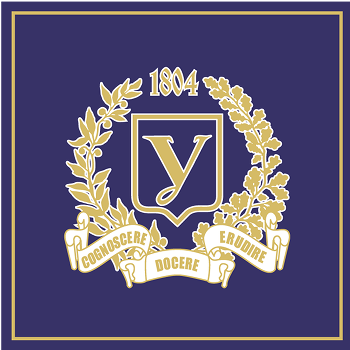river basin
- 2020-34
The Study of Condition of the South Bug River Basin with Using Geoecological Methods
Purpose. To assess the current state of the Southern Bug River basin and the degree of anthropogen-ic impact on it (transformation)
Methods. The methodology of complex field geographic research (according to S. Kurlov) was cho-sen for the research. On its basis, water samples were taken at the appropriate points of the river basin, which directly covered the Southern Bug River itself, as well as its tributaries, and the composition of coastal soils was analyzed. Laboratory experiments were performed on the basis of a licensed laboratory of the Uman National University of Horticulture
Results. Based on the analysis of the data set of the main hydrochemical indicators of the surface water quality of the Southern Bug river basin and the analysis of the soil, it was found at some experi-mental points that the MPC of content of the studied indicators was exceeded. The content is exceeded at all sampling points, due to the high content of complexes with humic acid salts, secondary waterlogging of reclaimed lands. The nitrite content is exceeded in the following places: r. Southern Bug (Vinnitsa and Ladyzhin), r. Ustya (Nemyriv), r. Udych (Teplitskiy district) and r. Dohna (Bershad district). The main reason for the intake of nitrates into the water is the washout of fertilizers from fields and vegetable gardens. All surface water bodies have increased water hardness, its acidity is within normal limits. The soils adjacent to the streams under consideration bear clear signs of hydrogenic accumulation of substances (carbonates, gypsum, salts) and deltaic conditions of formation (horizontal stratification, horizons buried, remnants of freshwater fauna).
Conclusions. The concentration of pollutants increases with the approach of the tributaries of the Southern Bug River and the relief formed by them to their base of erosion. Excess concentrations of alka-line hydrolyzed nitrogen, as well as phosphorus and potassium compounds at the sampling points indicate a high level of intensity of the farming system, in which the use of agrochemicals is given priority. Howev-er, long-term ingress of these compounds into the water body will accelerate the process of eutrophication in the near future. The loss of humus in the soils of agricultural lands adjacent to the rivers Sob, Dokhna, Ustya was revealed. In general, the geosystem of the Southern Bug River suffers from a complex anthropo-genic impact, the main source of which is agricultural production.
- 2011-3-4-:16
Geoecological aspects of research of the pool system of Western Bug river basin
Description of basic principles of management is given by resources natural on the basis of hike. Structurally-geographical preconditions of optimization of nature are certain in the pool system of the river Western Bug of the Vol-yn area. It is reasonable, that taking into account of the pool system primary there must be replacement of branch con-trol system by nature resources by a complex pool.
- 2018-1-2-:29
Estimation of Environmental Sustainability of the Landscape of the Basin Western Bug Rivers In Volyn Region
Purpose. Determination of ecological stability of landscapes of the basin of the Western Bug River and its tributaries in Volyn region. Methods. Comparative-geographical, analytical, generalization, systematization, calculation of ecological stability of the landscape on the basis of the method of E. Clementova, V. Heinig. Results. The calculation of the quantitative assessment of the ecological stability of the landscapes in the basins of the Western Bug tributaries revealed that the KESL1 index of the Pischadka, Neretva and the Zolotoha River ranges from 1.3 to 1.6. That making basin landscapes conditionally stable. River Studyanka and Luga range from 0,027 to 0,026, which testifies them to the unstable structure of the landscapes of the basin with pronounced instability. It is established that in the landscapes of the basin of the Western Bug River of Volyn Region, their ecologically balanced structure is predominant at the KESL1 1.04 index. This is due to the structure of the lands of the basin, where agricultural (arable land) cause a big loading and destabilized landscapes occupies in most of the area. The largest plots of arable land occupy the sub basins of the rivers Studyanka and Luga, and the smallest ones in the sub basins of the Neretva, Zolotukha and Gapa rivers, which is due to the significant forested areas of the basin. The qualitative assessment of ecological stability of the landscape is characterized by the coefficient of ecological stability of the biotechnical elements of the entire landscape of the K ESL2. Calculations of KESL2 showed that the landscape structure of the basin of the Western Bug River in the Volyn region is slightly stable and the index is 0.48. The KESL2 coefficients of the Studyanka and Lug lakes are 0.21 and 0.23 respectively, and characterize them as unstable geosystems. The structure of the landscapes of the basins of the Peschadka and Kopayevka rivers for KESL2 - (0,95 - 0,67) is stable. Consequently, intensive settlement of land, drainage of marshes, deforestation violated the integrity of landscapes led to their denaturalization. Particularly significant changes occurred in the southern part of the basin. Conclusions. As a result of the calculations of the quantitative assessment of the ecological stability of landscapes (KESL1), the landscapes of the basin of the Western Bug River in the Volyn region are conditionally stable. And according to the indicators of qualitative assessment of ecological stability of the landscape (KESL2), they are characterized as low-static geosystems. In general, determining the stability of the landscape is important for assessing the ecological situation of the basin of the Western Bug River, since it fully reflects the overall ecological status of the river basin.
- 2017-3-4-:28
Ecological status of surface water of the river Stokhid basin
Purpose. The analysis of the surface water quality of the Stokhid river, the definition of the class and the category of water quality. Methods. Comparative geographic, analytical, generalization and systematization. Results. Inner annual dynamics of the components of the hydro chemical conditions of surface water composi-tion is closely linked with river runoff, the formation of which occurs due to loss of precipitation and nutrition of groundwater. Based on the analysis of monitoring observations, carried out by the State Environmental Inspec-torate in the Volyn region for the period from 2007 to 2017, it has been determined the multi-year time and spa-tial dynamics of the average annual values of integrated environmental indices by the average values. They are following: in the village Malinovka IE aver. = 2,2 and in Lyubeshiv village IE aver. = 2,4. The water of river Stokhid belongs to the second class of quality ("good", "pure"), to the second category ("very good", "very pure") and subcategories 2 (3) ("very good", " clean" water with a tendency to approach the category of "good", "fairly clean") respectively. Dynamics of average annual values of integral ecological indexes for the worst values in village Malinovka IE worst = 2,6 and in the village Lyubeshiv IEworst = 2,8 was characterized by water of the second class ("good", "pure"), third category ("good", "fairly clean"), subcategory 2-3 (water transitions in quality from "very good", "pure" to "good", "fairly clean") and subcategory 3 (2) ("good", "fairly clean" water with a bias to "very good", "clean"). Conclusions. In general, it should be noticed, that when calculating the values of integral ecological indexes, the value of the indexes of trophic and sapro-biological indicators are the worst. Compounds of Nitrogen was among the substances that determined the water quality as "very poor" and "very dirty". Increased levels of Nitrogen compounds in the Stokhid river is mainly due to the intake of insufficiently treated wastewater, surface runoff from agricultural land and the decomposition of non-living organic matter in the spring.
- 2015-3-4-:24
Geoecological Consequences of the Communal Enterprises Work with In Western Bug River Basin
In the article, current ecological state problems, which are caused by the communal enterprises work within river basins in Ukraine, were reviewed. The Western Bug River is a right tributary of the river Visla, which flows into the Baltic Sea, so the causes of a water quality decrease research has a cross-border value. Physical geography features of the Western Bug river basin, a volume of the water intake, a quantity and a quality of water which is returned after use, were described. Sources of the water pollution and the state of geocomponents of the river basin were found. The biggest water pollution sources among communal enterprises – Lviv communal pollution control facilities and Lviv city landfill were explored in detail. Based on the fund materials analysis and field research, an analysis of the quality indicators of the downstream water pollution changing was made. Geoecological consequences for a basin geosystem were characterized. Main problems were found and the ways of solution were identified: increasing environmental awareness, increase forest cover, observance of buffer strips along water bodies, reclamation of disturbed land area increase natural-reserve fund.

